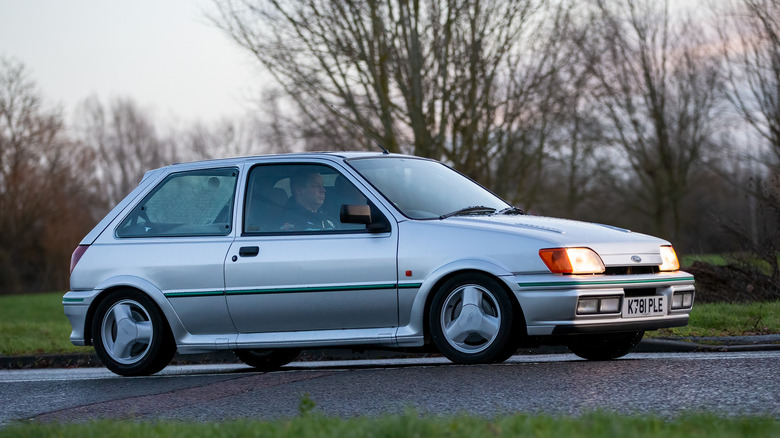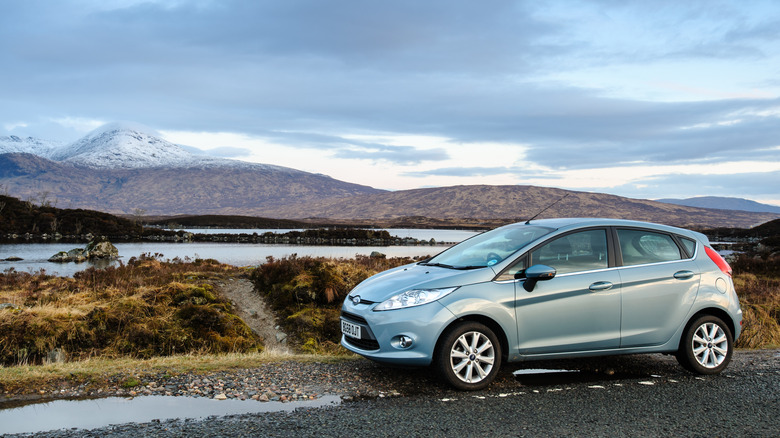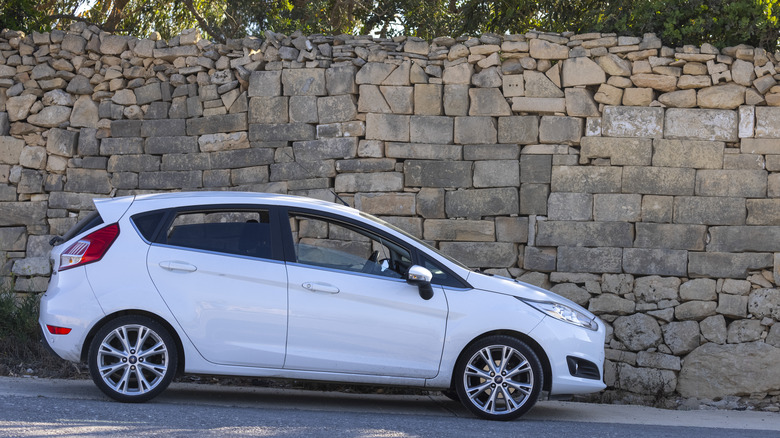Ford Fiesta: Flop Or Secret Success?
While the Ford Fiesta may not be the most legendary vehicle in automotive history, it still has an interesting past, prompting questions about its level of success. In the early 70s, the world grappled with an oil supply deficit that caused lengthy lines at the pump, steep prices, and flared tempers. Suddenly, people didn't want big block engines and looked to more compact, fuel-efficient, and inexpensive options.
Carmakers rushed to capitalize on the subcompact car craze, including Ford. Yet, Ford's vision incorporated more aerodynamics and prioritized passenger space in the first 1976 model. One of the Fiesta's advantages was the number of models available throughout its life, which would continue to be one of its strongest aspects.
The Fiesta gained in popularity over its initial run so that by 1983, Ford had sold more than a million units. After several iterations of this sub-compact, Ford announced that its production would cease in 2023. Over the years, Ford Fiesta faced drops in sales and the dichotomy of great success in Europe with struggles in the States. So, while the Fiesta experienced successful and disappointing periods during its production, it's not among Ford's biggest car flops of all time and will continue to live on in the minds of enthusiasts. During its run, this car's looks could fool you into thinking it was slow. However, some Fiestas belonged to a group of cars that are faster than they look.
European subcompact cars for Americans
While the 80s and 90s saw new Fiesta models rolled off the assembly line with enhanced features and solid sales numbers, trouble began brewing in the latter 2000s in the States. The subcompact Ford was popular during this time in the U.K. and is still a regular fixture on British roads. So when the sixth generation Fiesta wasn't adapted to different regions of the world as before, meaning the European and U.S. models were identical, Americans weren't buying it.
According to Car Figures, the Fiesta only sold 23,273 units to U.S. drivers in 2010. So, Ford needed to find a way to make the subcompact popular again with American audiences. Social media at the time was exploding in popularity, and Fiesta would become part of a revolutionary (at the time) marketing campaign that enlisted the help of internet influencers.
Ford selected 100 influencers to use the Fiesta as their daily vehicle and drum up excitement about the car to their audiences, according to Forbes. The general response regarding Fiesta from the media influencers was positive and incited substantial interest in the car. In 2011, sales of Ford's subcompact jumped up to nearly 70,000 units in the U.S. However, sales would slump again in 2012, dropping by 44 percent.
Why was Fiesta popular in the U.K.?
One of the attractive qualities of Fiesta was its smaller price tag compared to other European subcompacts. Even in 2023, you could purchase a new Fiesta starting in the sub £20,000 range (approximately $24,800). Compared with options from Volkswagen, Renault, and Peugeot, the Fiesta offered more value and more features for the cost.
Another advantage of the subcompact Ford was the number of different trims available, allowing you to customize. You could opt for the bare-bones model to save money, choose one with enhanced performance, or add several luxury features like a heated steering wheel for added comfort.
Lastly, many subcompacts can feel incredibly cramped for anyone but petite drivers and downright uncomfortable for adults in the back seat. Throughout its life, Fiesta was known for its pleasant interior space that even a full-size adult in the back seat could appreciate. While the small frame still limits its interior dimensions, the Fiesta fared better in comfort than many European alternatives.


